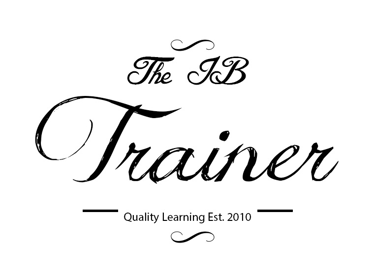What Shapes HR Planning? IB Business Guide
Explore what drives HR planning in IB Business Management - demographics, migration, gig work, flexibility - and how firms adapt in today’s world.
IB BUSINESS MANAGEMENTIB BUSINESS MANAGEMENT MODULE 2 HUMAN RESOURCE MANAGEMENT
Lawrence Robert
10/12/20254 min read


The Forces Behind The Workforce: Internal & External Factors in HR Planning
Let's imagine you’re applying for a job at Uber Eats. You live in Manchester, but they want you to deliver in Bristol. Move? No thanks. Or you log into a freelance site at 3 a.m. for a gig, because you need extra cash.
Whether you’re gigging or job-hunting, decisions companies make about who works where, when, and how are shaped by huge forces - not just what you and I do.
That’s HR planning in action. It’s the organising of who gets hired, where, and when.
Key Learning Outcomes
Understand what internal and external factors influence HR planning
Analyse how firms react to trends like demographic change, migration, gig economy, mobility, flexibility
Use real examples to show how theory plays out in actual businesses
What Is HR Planning, Again?
HR planning is predicting what staff a business will need (numbers, skills), then figuring out how to get them, keep them, train them, or let them go. It avoids awkward moments like “Oops, we don’t have enough staff” or “Why do we have 10 deliveries pending and zero riders available?”
It’s what links strategy (e.g. expansion) with people.
Internal Factors (Inside the Business)
These are the levers the company can pull to execute HRM planning efficiently.
Past Employment Data & Turnover
If your company has a 20% annual turnover increase, you’d better plan for new hires.
Historical data - who left, who stayed, departmental growth - gives you clues.
Skill Gaps & Competency Levels
If your team lacks data analysts, you know training or new hires are necessary.
Before hiring, a business audits: What skills do we already have? What’s missing?
Budget & Financial Health
You can't plan for hundreds of new hires if your budget says “no.”
Funding limits affect how many you recruit, how much training you provide, or whether you outsource.
Corporate Culture & Employee Relations
If your company values loyalty and internal promotion, you're more likely to develop people internally.
But if there’s friction (bullying, low morale), retention might suffer and planning gets awkard.
Technology & Automation
Some roles might not even exist in 5 years (think cashiers vs. self-checkout, or delivery drones).
HR planning must anticipate tech disruptors: which jobs will become automated, and which new roles will emerge?
External Factors (Forces You Can’t Fully Control)
These are wild cards - the environment in which the business operates directly affects HRM planning .
Demographic Change & Aging Populations
In Europe, many countries are getting older. Fewer youngsters entering the workforce means labour shortages in some sectors.
In Germany, for instance, skilled trades face gaps because younger generations want to avoid manual work.
Businesses must plan for fewer new workers and more retirees. That might mean restructuring job roles, automating certain tasks, or adjusting retirement age policies.
Labour Mobility (Occupational, Geographical, International)
Occupational mobility: Can employees easily switch jobs? If people are retrained, yes.
Geographical mobility: Will someone move from, say, rural Portugal to London for work? Many won’t because of family or housing costs.
International mobility: Firms might hire international talent, but visa rules, language, relocation costs are obstacles.
IB Business Management Real-life Example: The UK’s Post-Brexit immigration changes make international mobility trickier. Some sectors (like tech, healthcare) have had to adjust recruitment strategies to attract global talent.
Migration & Immigration Policies
Countries that ease immigration draw in talent. After 2020, countries like Canada, Australia, and parts of Europe strengthened skilled-worker visas to counter skill shortages.
Some UK firms now recruit from the EU, India, etc., to secure engineering or IT talent.
Flexible Work & Remote / Hybrid Models
COVID accelerated this shift. Many firms now plan assuming many employees will work remotely (or hybrid).
HR planning has to account for bandwidth, remote onboarding, digital tools, and maintaining culture across distance.
Gig Economy & Contract Work
Gig work (Uber, Deliveroo, freelancing) is a huge external pressure.
Firms sometimes avoid hiring full-time to stay nimble (agile) - but that increases turnover risk and may hurt loyalty.
IB Business Management Real-life Example: In Spain, laws have adapted to regulate gig work (e.g. court decisions forcing platforms to classify drivers as employees rather than independent contractors).
Legal & Regulatory Changes
Labour laws, minimum wage changes, union power - these all influence HR planning.
For instance, a new law increasing minimum wage across the EU forces businesses to review pay, benefits, and staff numbers.
Economic & Competitive Trends
Recessions, booms, or disruptive competitors can force hiring freezes or hiring surges.
If a rival offers ultra-flexible working, you might lose talent unless you adapt.
How Companies Actually Respond
IB Business Management Real-life Examples:
Amazon in the UK: Facing staff shortages, Amazon has invested in training programmes and local apprenticeships to grow talent internally.
Deliveroo / Uber Eats: They rely heavily on gig workers - so their HR planning is less about permanent staff, more about scheduling, platform algorithms, and retention incentives.
NHS / UK Healthcare: As demographics shift and the population ages, the NHS struggles to recruit across regions. It uses international recruitment (e.g. from EU or Commonwealth) and incentive packages (housing, relocation) to fill gaps.
Remote-first tech firms: Many have global hiring models - hire the best talent wherever they are - so HR planning includes policies for managing time zones, equipment, and employee inclusion.
IB Business Management Exam Tips (Don’t Lose Marks)
Always tie factors back to strategic business objectives (growth, cost leadership, differentiation).
Don’t just list factors - analyse how they affect decisions (e.g. “Demographic aging forces automation or older-worker retention strategies”).
Use recent IB Business Management Real-life Examples: to back up arguments - that’s where examiners see depth.
When asked, always consider both opportunities and threats (internal vs external).
Watch out: don’t confuse internal and external - show you know which side a factor lies on.
“Exam Gold” Summary
Internal Factors
Past turnover & employment data
Skills & competency gaps
Budget constraints & financial health
Organisational culture & relations
Technology & automation
External Factors
Demographic change & aging
Labour mobility (occupational, geographical, international)
Immigration & migration policies
Flexitime, remote/hybrid work
Gig economy & contract work
Legal/regulatory environment
Economic/competitive trends
Tip for IB Business Management Answers:
Always connect to business objectives
Include recent, real-world examples
Analyse, don’t just list
Show both pros & cons
Stay well,
IB Complete Support Courses, a new generation of affordable support materials directed at IB students seeking grades 6 or 7.
© Theibtrainer.com 2012-2025. All rights reserved.
